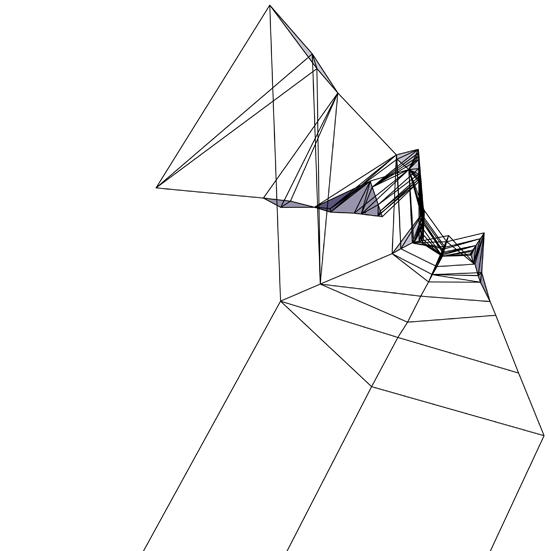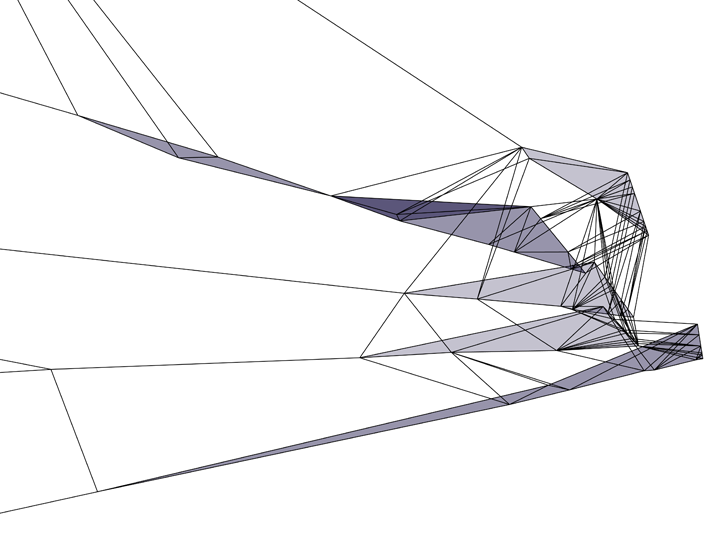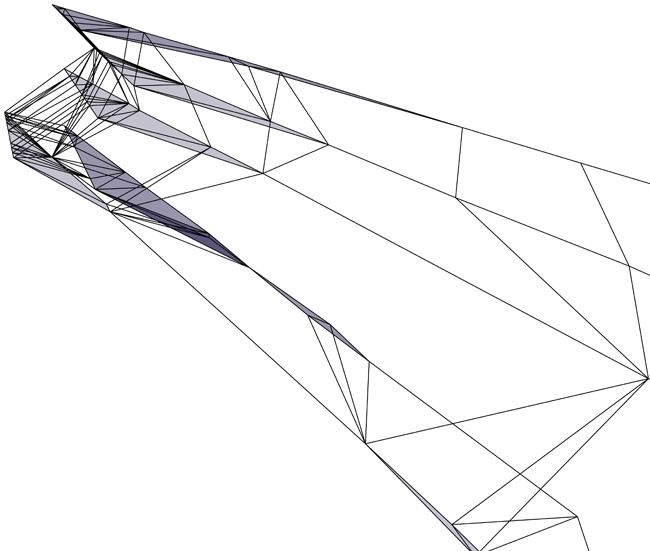
The 85s translated into 3-D
January 21, 2012
Nathan Tremblay has translated poems from the 85 project into three-dimensional images, which serve as models for sculptural objects.
Tremblay began by designing a generative algorithm in collaboration with computer scientists Dr. Sebastian Von Mammen and Dr. Dave Phillips, which he applied to the 85 letter translations of Chinese poems created by Claire Huot and Robert Majzels to produce three-dimensional images.
The algorithms employed extract linguistic characteristics directly from the texts provided by Huot and Majzels to constitute unique sets of spatial coordinates that are then translated into mathematical geometric systems called Voronoi maps and Delaunay triangular meshes.

85s by Nathan Tremblay
January 20, 2012
“Delaunay Triangulation is the division of a surface or plane […] into a set of triangles, usually with the restriction that each triangle side is entirely shared by two adjacent triangles” (Wolfram Research Inc.).
“Voronoi Diagrams [are created] by partitioning of a plane with points into convex polygons such that each polygon contains exactly one generating point and every point in a given polygon is closer to its generating point than to any other” (Wolfram Research Inc.).
These diagrams have served to initiate an exploration of alternative object generation. Specific characteristics and identifying elements of individual poems were used to create three-dimensional images on a computer and then to build sculptures, more precisely a bench.

85s in 3-D by Nathan Tremblay
January 17, 2012
In the case of the Tang Dynasty poems, 42,863 canonical works by 2,529 poets are classified by Chinese scholarship into 900 numbered volumes. Each poem is therefore assigned a specific three-digit number within a specific volume, also identified by three digits. The first three digits indicate the volume; the last three the specific work. Five of the Tang dynasty poems were selected: Du Fu, Lodging at the Magistrate’s (225-022); Li Bai, Common Autumn Song (167-001); Li He, Li Ping Plays the Kong Hou (390-001); Meng Haoran, Spring Morning (160-187); and Wang Wei, Deer Park (128-027). [1]

85s in 3-D by Nathan Tremblay
January 15, 2012
The complete works of Bada Shanren, for their part, have been collected in a definitive edition of four volumes published in 2009 by the Jiangxi Fine Arts Publishing House, Nanchang. The first digit identifies the volume; the second digit, the page number within that volume. Hence, Chick Eats Cow (2-310); King Mu Laments the People’s Suffering (4-778); Nowhere to Go (4-779); Poet as Misshapen Melon (1-3); The Instrument Abandoned (1-60).